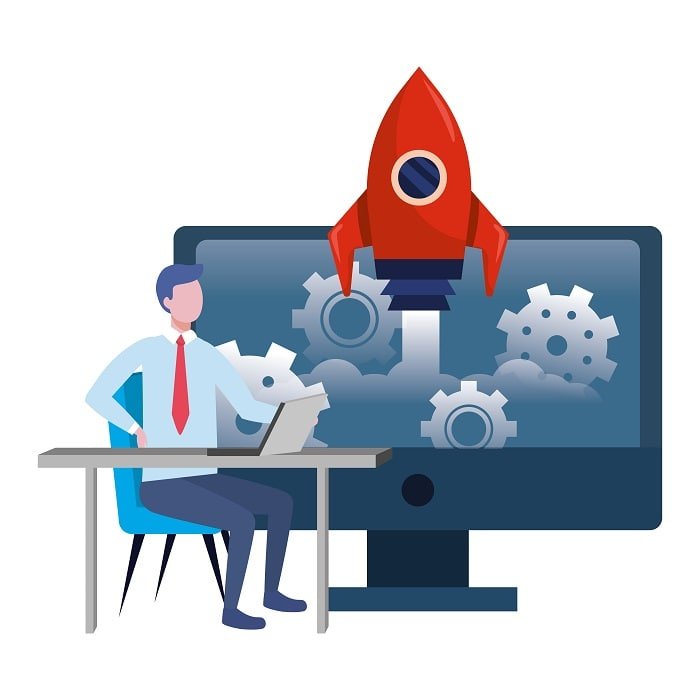
The integration of Artificial Intelligence (AI) in business is no longer just an option but a crucial element in maintaining competitive advantage. As AI technologies evolve, they pave the way for significant improvements in efficiency, productivity, and decision-making across various sectors. This guide will explore the strategic approach necessary for effective AI implementation, highlighting the transformative potential AI holds for your business operations.
Understanding Artificial Intelligence
Definition and Key Components
Artificial Intelligence refers to systems or machines that mimic human intelligence to perform tasks and can iteratively improve themselves based on the information they collect. AI includes several key components:
- Machine Learning: Algorithms that learn from and make predictions based on data.
- Deep Learning: A subset of machine learning involving neural networks with multiple layers.
- Natural Language Processing: The ability of a computer program to understand human language as it is spoken.
How AI Works
AI operates by combining large datasets with fast, iterative processing and intelligent algorithms, allowing the software to learn automatically from patterns or features in the data. AI is deployed in various business applications such as:
- Predictive Analytics: Forecasting future trends and behaviors.
- Automation: Performing routine tasks with little or no human intervention.
- Customer Service: Enhancing customer experience through chatbots and personalized service.
Examples Across Industries
- Healthcare: AI tools are used for personalized medicine and advanced diagnostics.
- Finance: AI assists in fraud detection and risk management.
- Retail: AI optimizes inventory management and offers personalized shopping experiences.
Assessing Your Business Readiness for AI
Evaluating Current Processes
Start by assessing your existing business processes to identify potential areas for AI integration. Look for tasks that are repetitive or data-intensive, as these are prime candidates for AI enhancement.
Data Infrastructure and Quality
Ensure that your data infrastructure is robust and that your data quality is high to support effective AI implementation. AI systems require a large volume of clean, well-organized data to function optimally.
Organizational AI Maturity
Assess your organization’s readiness for AI by evaluating existing skill sets and technology. Identify any gaps in resources or skills that may need to be addressed.
Developing an AI Implementation Strategy
Defining Business Objectives
Clearly define what you aim to achieve with AI. Set specific, measurable goals and determine how AI can help meet these objectives.
Selecting the Right AI Technologies
Choose AI tools and technologies that align with your identified needs. Consider factors such as compatibility with existing systems, scalability, and ease of integration.
Creating an Implementation Roadmap
Develop a detailed plan that outlines key milestones, timelines, and required resources. This roadmap will guide your AI implementation process, ensuring alignment with business goals.
Building the Necessary Infrastructure
Data Infrastructure
Upgrade your data handling capabilities to ensure they can support AI technologies. This might include enhancing data storage, processing power, and security measures.
Cloud-Based Platforms
Implement secure and scalable cloud-based platforms that can host AI applications. Cloud environments offer flexibility and scalability for AI deployments.
Integration with Business Systems
Ensure that AI tools integrate seamlessly with your existing business systems to maximize their utility and minimize disruption.
Upskilling Your Workforce
Identifying Skills Needs
Determine the AI-related skills and knowledge that your workforce requires. This may include data science, machine learning, and AI ethics.
Training and Development
Provide training programs to upskill your employees. Focus on building a workforce that is proficient in AI applications and aware of the implications of AI technology.
Fostering Innovation
Cultivate a culture of innovation and continuous learning to support ongoing AI adoption. Encourage creativity and experimentation among your employees.
Implementing and Monitoring AI-Powered Solutions
Phased Deployment
Roll out AI solutions in a controlled, phased manner to manage risks and make adjustments as needed.
Monitoring and Evaluation
Continuously monitor the performance of AI implementations. Use insights gathered to refine and optimize your AI strategies.
Iterative Improvement
Adopt a feedback-driven approach to continuously improve AI applications based on real-world performance and user feedback.
Overcoming Common Challenges in AI Implementation
Addressing Ethical and Security Concerns
Implement strict data privacy measures and consider the ethical implications of AI. Develop guidelines and practices to ensure ethical AI use.
Managing Change
Address resistance to AI adoption through effective change management strategies. Communicate the benefits clearly and involve key stakeholders in the transition process.
Ensuring Scalability
Plan for the future scalability of your AI initiatives. Ensure that your AI solutions can grow with your business.
Conclusion
Implementing AI in your business is a strategic process that requires careful planning and consideration. By understanding AI technologies, assessing readiness, developing a strategic plan, and continuously refining your approach, you can harness the power of AI to drive significant business improvements. Start your AI implementation journey today to unlock new levels of efficiency and innovation in the digital age.















































